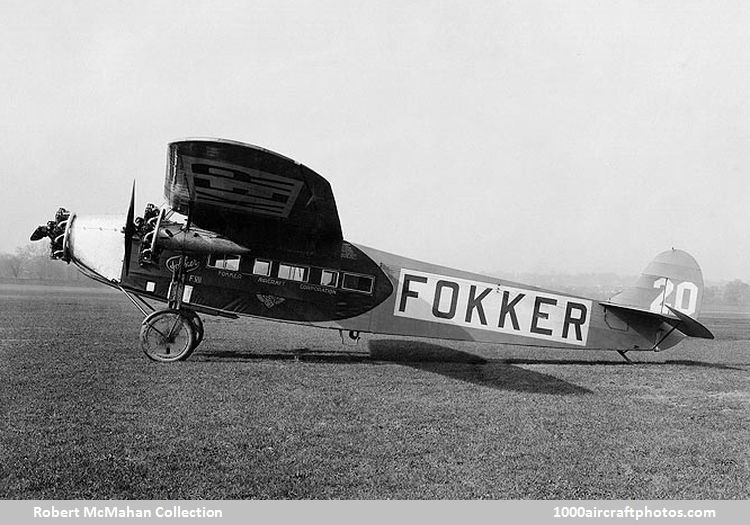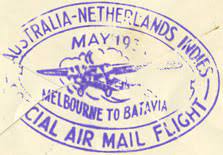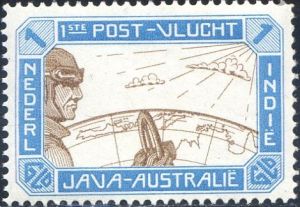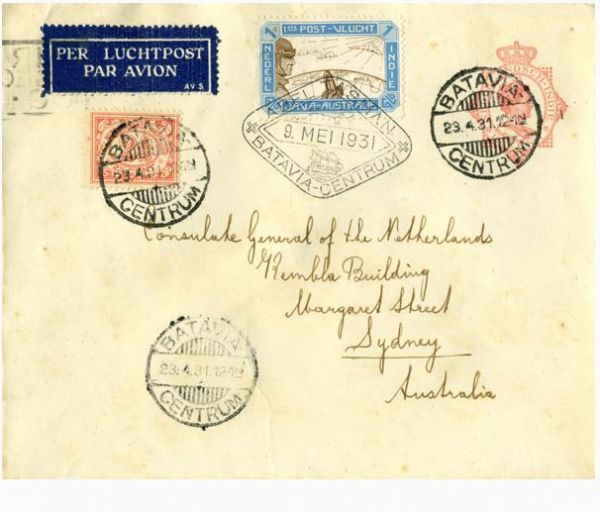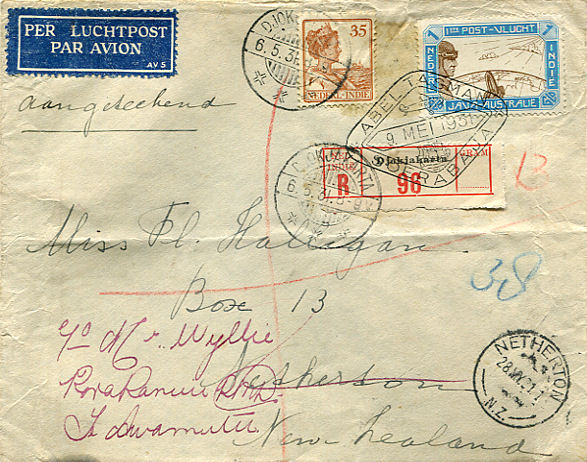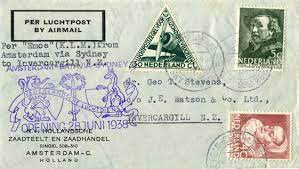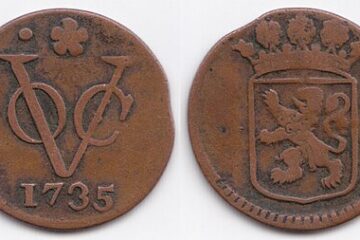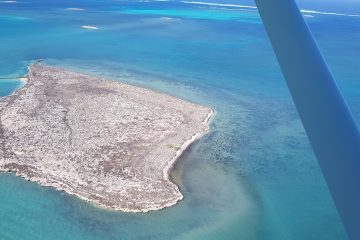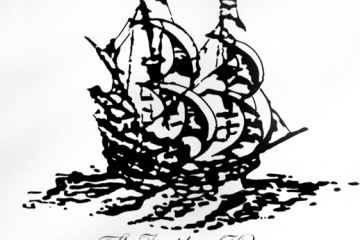In May 1931, KLM added an experimental flight from Batavia to Melbourne to their regular Amsterdam – Batavia service providing a through service from Amsterdam to Australia.
The plane was a Fokker FVIIA/3m trimotor specially named ‘Abel Tasman’ for this trip. The pilot and co-pilot were Maurits Pattist and Jan Moll. Mail from London was accepted and was flown to Amsterdam on 29 April. The rate to both Australia and New Zealand was 2s 6d.
Fokker FVIIA/3m trimotor
| Fokker was a Dutch aircraft manufacturer named after its founder, Anthony Fokker. The company operated under several different names, starting out in 1912 in Schwerin, Germany, moving to the Netherlands in 1919. During its most successful period in the 1920s and 1930s, Fokker dominated the European and American civil aviation market and the 8 – to 12-passengers Fokker FVIIA/3m trimotor was used by 54 airlines across the world. The ‘Southern Cross’ flown by Australian aviator Charles Kingsford Smith was also a Fokker F.VIIb/3m trimotor monoplane. |
The plane took off – for the 1st leg of the flight from Amsterdam to Batavia – on 30 April. The schedule: Budapest 30 April, Athens 1 May, Cairo 2 May, Baghdad 3 May, Jask 4 May, Jodhpur 5 May, Calcutta 6 May, Tavoy 7 May, Medan 8 May and arriving in Batavia on 9 May.
The plane now continued for the 2nd leg and arrived at Soerabaja 12 May, Koepang 13 May, Wyndham 14 May, Brunette Downs 15 May, Longreach 16 May, Brisbane 17 May, Sydney 18 May and Melbourne 19 May. Mail for Perth was off-loaded at Wyndham and flown to Perth by Western Australian Airways arriving there on 18 May.
The return flight left Melbourne on 22 May and arrived in Batavia on 27 May and Amsterdam on 6 June. The postage rate for this flight was 3s 6d.
This successful flight prompted (British) Imperial Airways to quickly plan two experimental flights from London to Australia and return. However, they were unable to establish services to Australia.
To not give the Dutch a head start, the British were able to stop Australia providing landing right for further postal or civil services from the Netherland or Netherlands East undies. Imperial Airways formally informed Australia that Britain would lose prestige if they led the Netherlands start regular flights to Australia. At this stage Australia did not run its own Foreign Affairs, that was run for them by the British.
Unable the disguise of Qantas being a British service the Dutch were forced to allow them to establish a flight from Brisbane to Singapore via the Netherlands East Indies (as the Dutch were allowed to fly over British territories). From here the Imperial Airways flew to London.
By the middle of the 1930s the British decided to start using flying boast for their international flights. Australia feared that this would undermine Qantas who had to rely on land-based planes to service their fast country. This finally resulted in Australia granting the necessary aviation licences to the Dutch much to the chagrin of the British. Slowly Australia stated to take greater control of its own foreign affairs.
The first regular air mail/passengers flight for Australia left Schipol Airport on 28 June 1938 and followed the above-mentioned established route to Batavia using a DC 3 aircraft.
The Batavia – Sydney section was similar to the one from 1931 and was operated by KNILM using a Lockheed Super Electra. The air mail then left Batavia on 3 July 1938 and arrived via Brisbane in Sydney on 5 July.
Paul Budde
Sources:
- Airmails of New Zealand, volume 2 (1986) compiled by Douglas A Walker, and The New Zealand Airmail Catalogue, (2nd Edition, 1994) by James Stapleton. Both are published by the Air Mail Society of New Zealand.
- There is an extensive report on the negotiations between the Netherlands and Australia regarding the aviation licencing request.
